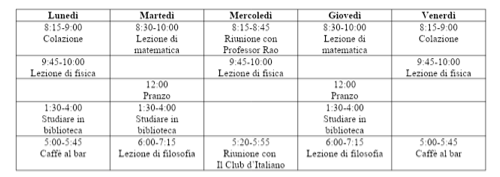Consider John Frederick Nims’s comments below on the sestina form.How well does his description of a good sestina fit Bishop’s poem? A shallow view of the sestina might suggest that the poet writes a stanza, and then is stuck with six words which he has to juggle into the required positions through five more stanzas and an envoy—to the great detriment of what passion and sincerity would
have him say. But in a good sestina the poet has six words, six images, six ideas so urgently in his mind that he cannot get away from them; he wants to test them in all possible combinations and come to a conclusion about their relationship.
What will be an ideal response?
Nims’s comment seems an apt description of “Sestina.” In the six repeated words, we are given the setting (house), the characters (grandmother, child), and key symbols (Stove, almanac, tears). “Sestina” weaves all six into a subtle relationship. This poem is full of things that suggest magic: the prophetic almanac, the teacup (with which fortune-tellers divine), the “marvellous stove.” It also is full of secret-keepers: the grandmother, the almanac with its powers of prophecy, the concluding reference to the “inscrutable house.” The repetitions are worth tracing: tears, in particular, accumulates an effect. In stanza 2 the tears arrive like an equinoctial storm; in 3, the kettle also weeps; in 4, tea is tears; in 5, the man in the child’s drawing wears tears; in 6, the almanac weeps paper tears; and finally, in the envoy, tears are flowers. “Time to plant tears” may be a literal quotation from the almanac, tears being (if memory serves) the name of a small white flower favored by rock gardeners.
Bishop’s Complete Poems contains another intriguing sestina, “A Miracle for Breakfast.” At the time it was written Bishop remarked (in a 1937 letter to Marianne Moore):
It seems to me that there are two ways possible for a sestina—one is to use unusual words as terminations, in which case they would have to be used differently as often as possible—as you say, “change, of scale.” That would make a very highly seasoned kind of poem. And the other way is to use as colorless words as possible—like Sidney, so that it becomes less of a trick and more of a natural theme and variations. I guess I have tried to do both at once.
In the later “Sestina,” the terminal words seem to be deliberately usual ones.
You might also like to view...
Vocabolario. Gli amici di Mauro studiano materie diverse. Scrivi la materia giusta secondo gli indizi.
Esempio: Riccardo studia gli elementi in un laboratorio… Carmine studia Platone, Aristotele, Socrate, Kant e Nietzsche. ______________________________________
Luigi è al bar. Che ore sono? _______________________________________________________
Ecco il programma giornaliero di Giovanni. Usando questa tabella, rispondi alle domande con frasi complete.

Add missing semicolons, colons, and dashes to the following sentences. Be sure to have a
reason for every mark you add. Any commas already within the sentences are necessary and should not be changed. Some sentences are correct. Our cat and our bird were afraid of each other at first now they ignore each other. What will be an ideal response?
Creo que _______ menos ruido en el campo.
a. hay b. haya